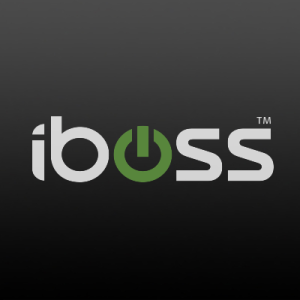We purchased iboss for its SASE and ZTNA features. We're currently utilizing the SASE capabilities and have plans to deploy the ZTNA functionality in the future. We're also using the web browser sandboxing feature for some limited use cases. We currently have approximately 80,000 users on the platform.
iboss is primarily a cloud-based solution, but I tend to think of it more as a platform-as-a-service due to its deployment flexibility. In its most basic form, it utilizes distributed points of presence globally, and agents on our devices connect to the nearest one for seamless backend routing. However, for data center needs, they offer physical hardware for on-premises installation, bridging those environments into their network. They have similar solutions for cloud integration as well. So, while fundamentally a cloud service, iboss's adaptability has allowed us to address all our advanced deployment requirements.
iboss is easy to use despite its complexity. Multiple engineers manage it, but it's significantly more straightforward to administer than traditional VPNs and web proxies. This is mainly because iboss handles the back-end infrastructure, leaving us to focus on agent deployments and scheduling upgrades. The user interface is intuitive enough for junior engineers to grasp quickly, unlike some other tools we use. Overall, I'd give it a B+ or A- for ease of use. There are a few clunky areas, but they're not unique to iboss, so I don't hold them against it too much.
During the RFP process, their single console was a significant factor that inclined us toward iboss. At least two of their main competitors have multiple consoles, which creates unnecessary administrative overhead. As a result, we awarded iboss additional points for their streamlined approach.
So far, iboss has allowed us to remove the traditional web proxy and eliminate the endpoint DLP. If the roadmap continues as intended, we will use it to replace legacy VPN. The only reason we haven't done that yet is not a product issue; it's simply that we have a lot of internal network-level complexity to resolve first. However, we intend that it will also replace the traditional VPNs we use, including Checkpoint, Palo Alto, and others.
iboss has reached a breakeven point, but ultimately it will lead to cost reductions. While the previous design needed more staff to operate, it has enabled a leaner engineering team than would have been possible if the legacy systems were retained. Though an exact dollar amount cannot be given, it's either at a breakeven point or already saving money, and ultimately, it's expected to generate savings.
Having one console improves security, as it reduces the number of tools we need to monitor, which is crucial for managing overhead when dealing with large amounts of data that need to reach the SIM. More tools mean more data connectors to operate, which increases the engineering team's workload and impacts the operations team, which needs data quickly. Therefore, limiting the number of sources simplifies transferring data and minimizes potential issues. The setup process, from proof of concept to initial deployment, took only a few weeks, demonstrating its efficiency and enabling faster security implementation, as it served both as a replacement for legacy technology and a new addition.
The visibility iboss provides into our environment is comprehensive. As a large retailer with a complex environment, we have it deployed at 2,200 physical stores, 100 distribution center supply chain facilities, and all corporate employees. We are now starting to connect it to the cloud, which will give us transparent visibility across our entire infrastructure.
We use ChatGPT risk protection, which is crucial as we navigate our journey into AI, like most companies. We have approved use cases and sites that aren't, with ChatGPT being one of the latter. It was among the first sites we blocked. iboss's granularity allows us to specify which users can access ChatGPT if, for example, a development team gets approval, ensuring minimum access without opening it to everyone. This level of control wasn't possible with our previous legacy platform.
We are beginning to implement zero trust and have a few use cases deployed currently. My goal is to have it fully deployed within the next 12 to 18 months. Realistically, any delays are not due to the product itself but rather the politics of large organizations. Convincing other VPs takes time, and as a Fortune 50 company, we tend to move slower. However, we will ultimately deploy zero trust broadly across the organization.
We experienced benefits from iboss immediately. While it's a complex platform with extensive capabilities, the time it takes to fully realize its benefits depends on the organization's willingness to embrace change, as it significantly alters the user experience. We saw immediate benefits upon deployment and have continued to see incremental improvements since then. However, it's crucial to note that it's not a solution where you deploy it and wait months or years for results. The speed at which you gain benefits is largely up to you. As a slower-moving organization, we opted for a gradual rollout to avoid disrupting everyone. I advise anyone deploying this type of platform to be mindful of the user experience changes and communicate proactively. We were careful to inform the business about potential block pages and provide guidance on how to request access to necessary sites. iboss, the vendor, was extremely helpful in supporting our rollout and providing resources, leading to a surprisingly fast implementation compared to other projects I've managed.
iboss has generated cost savings by enabling us to consolidate some capabilities and eliminate the need to purchase additional tools that would have otherwise been necessary.



